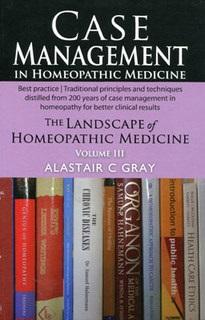The Substance of Homeopathy by RAJAN SANKARAN [#SANSUB]
$65.00
Description
One of the leading contemporary homeopaths gives his materia medica, especially the minerals. He writes in detail about the miasms with modern insight.
In the “Spirit”, Rajan presented his concept of disease as delusion. Here, he shows how delusions can be classified using Hahnemann’s theory of miasma. With numerous illustrative cases, he shows how this classification can be used as a map of disease to facilitate remedy selection. Next, a detailed study of homeopathic drugs with reference to their source reveals the purpose of the traditional classification into plant, animal and mineral kingdoms. The results of a detailed study of the periodic table are presented which whow the relation between chemistry and homoeopathy, underlining the scientific basis of homoeopathy. The mineral remedies are studied in detail and with cases, call forth-vivid images to mind. A number of recent drug provings conducted by Rajan in his seminars all over the world are included, which give a new insight into these drugs. After a study of some plant and animal remedies, there follows a differential analysis of drugs from the various kingdoms – this study will prove a landmark in the homoeophathic field. Finally. Man y original ideas on homoeopathic philosophy are expounded, chief among these being his thoughts on how and why organic pathology develops.
This book review is reprinted with permission from Homeopathic Links. Summer 1994
Hard cover 303 pages
Reviewed by Beat Spring
“I like to share what I had the joy of discovering for myself” – indeed this book reads like a personal notebook of a man on his quest for more and more knowledge. And Sankaran, who combines a very clear thinking mind with a free and creative spirit, has substantial insights to share. His searching mind seems to move in two directions – an attempt to find order in the vast pool of knowledge:
– a big section is dedicated to the miasms, which Sankaran presents with a new, deeper an exciting understanding.
– another major section deals with the ‘natural order of drugs’. He presents the common theme of the mineral, plant and animal kingdom. The keyword for the plants being ‘sensitivity’, for animals ‘competition’ and for the minerals ‘structure’. He relates the homoeopathic characteristics of the minerals to chemistry’s periodic system (in this making a link to chemistry) and illustrates this with case examples and materia medica.
In both the miasms as well as the natural order of drugs, the background of his reasoning is not a philosophising for its own sake, but rather the attempt to find new ways to practise homoeopathy even more efficiently.
The other direction seems to be aimed at expanding present knowledge:
– bothered with the question why different homoeopaths come up with different prescriptions for the same patient, Sankaran concludes that we are still prescribing for the symptoms and offers more ways on how to approach a case to really get to its depth.
This book is a gem, for the experienced homoeopath as well as for the beginner. For the student it offers a glimpse into the wide range of possibilities homoeopathy has to offer after the basic skills have been learnt; for the experienced it may be a welcome stimulus to expand their own framework and find new challenges to learn, experiment and grow. The only task which is left to the reader is to distinguish what has been born from long experience and thinking, and what is just a new experiment waiting to be validated in future. “I present these ideas and concepts with the hope that they will be studied with an open mind, yet critically. The ideas in this book are neither complete nor final.”
This book invites one to enter upon an exciting journey, a journey tin which one may play with possibilities and search for the truth beyond dogma and limitations.
Orders for this book require a “special order” which means that it is nonreturnable.






Reviews
There are no reviews yet.